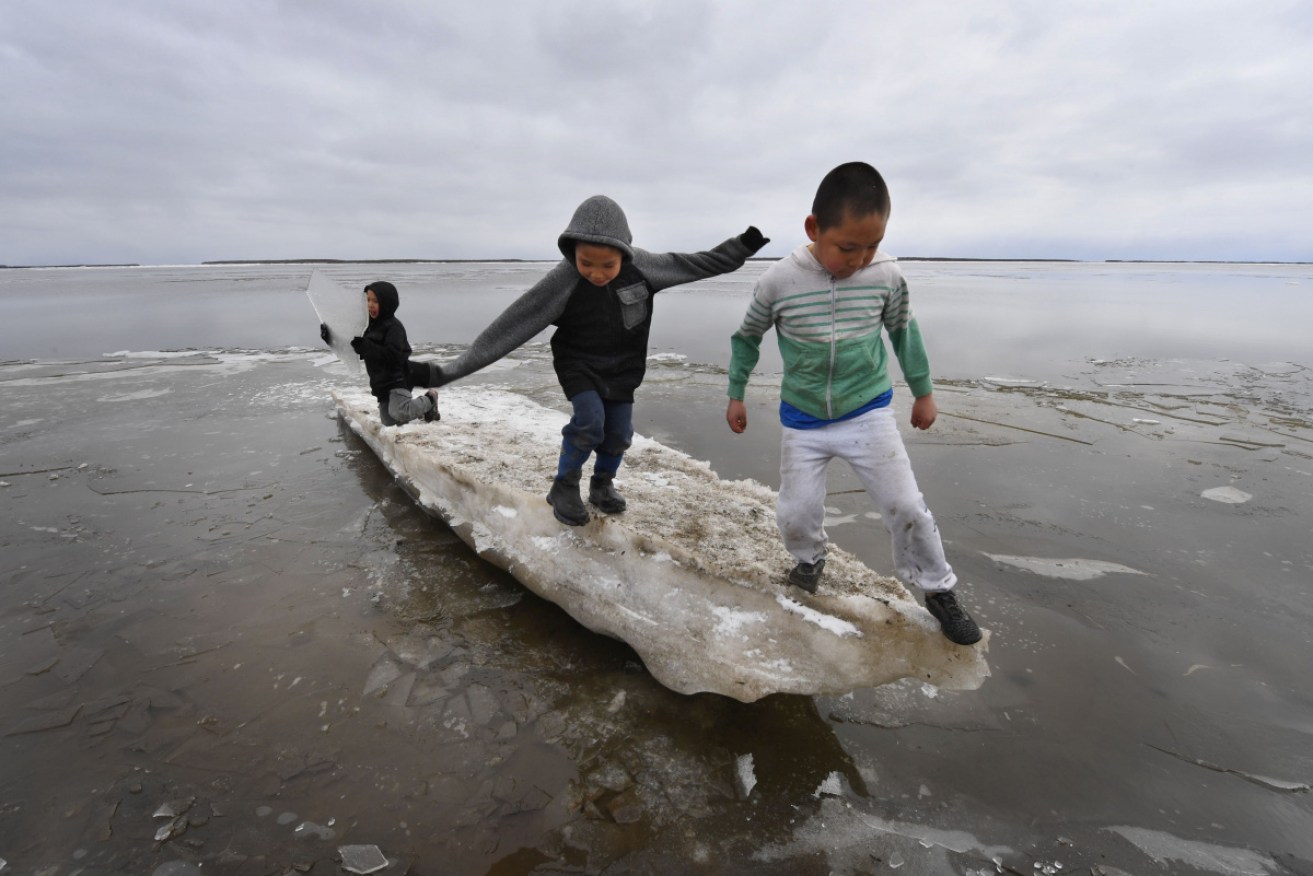Alaska is US’s ‘canary in the coal mine’ for climate warming

School children play on melting ice at climate change-affected villages on the Yukon Delta in Alaska. Photo: Getty
Alaska has been America’s canary in the coal mine for climate warming, and the yellow bird is swooning.
July was Alaska’s warmest month ever, according to the National Oceanic and Atmospheric Administration.
Sea ice melted. Bering Sea fish swam in above-normal temperatures. So did children in the coastal town of Nome. Wildfire season started early and stayed late. Thousands of walruses thronged to shore.
Unusual weather events like this could become more common with climate warming, said Brian Brettschneider, an associate climate researcher at the University of Alaska Fairbanks’ International Arctic Research Centre.
Alaska has seen “multiple decades-long increases” in temperature, he said.
“It becomes easier to have these unusual sets of conditions that now lead to records,” Mr Brettschneider said.
Alaska’s average temperature in July was 14.5 degrees.
That’s three degrees above average and 0.4 higher than the previous warmest month of July 2004, NOAA said.
The effects were felt from the Arctic Ocean to the world’s largest temperate rainforest on Alaska’s Panhandle. Anchorage, the state’s largest city, on July 4 for the first time hit 32.22 degrees.
Sea ice off Alaska’s north and northwest shore and other Arctic regions retreated to the lowest level ever recorded for July, according to the National Snow and Ice Data Centre at the University of Colorado.
Arctic sea ice for July set a record low of 7.6 million square kilometres.
That was a South Carolina-size loss of 80,000sq/km below the previous record low July in 2012.

Polar bears’ habitat is increasingly being diminished. Photo: Getty
Sea ice is the main habitat for polar bears and a resting platform for female walruses and their young.
Several thousand walruses came to shore on July 30, the first time they’ve been spotted in such large numbers before August.
Alaska’s wildfire season started in April. July’s dry and hot temperatures extended it.
An expected rainy season marked by southwest winds pushing up moisture and soaking fires did not show up on time, said Tim Mowry, spokesman for the state Division of Forestry.
“It extended our fire season through the month of July,” Mr Mowry said.
July was the hottest month measured on Earth since records began in 1880, NOAA reported on Thursday.
And a United Nations report earlier this month warned that global warming threatens food supplies around the world.
-AAP








